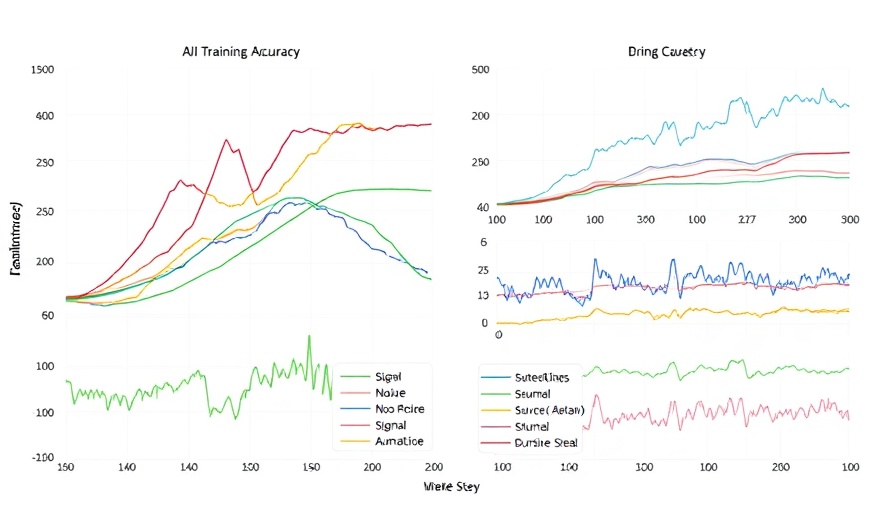
Understanding the Importance of Evaluating LLMs
In a digital age where artificial intelligence (AI) is becoming increasingly pivotal for businesses, understanding the evaluation of large language models (LLMs) is key. For small and medium-sized businesses (SMBs), the ability to select the right AI model can dictate the success of their operations, from customer engagement to content creation. As LLMs continue to evolve, harnessing the right evaluation benchmarks is more important than ever to ensure these tools meet the growing demands of the market.
Signal and Noise: Demystified
The concepts of signal and noise are essential to a clearer evaluation of LLMs. The signal can be understood as the measure of a benchmark's effectiveness in differentiating between models. A strong signal indicates that the performance of various models vastly differs, allowing businesses to make informed decisions. Conversely, noise represents the randomness and variability associated with model training. High levels of noise in benchmarks can lead to inconsistent results, creating a burden for teams relying on AI for critical operations.
Signal-to-Noise Ratio: A Game Changer
The innovation presented by the Allen Institute for Artificial Intelligence (Ai2) is the emphasis on the signal-to-noise ratio (SNR). This metric quantifies the relationship between how well a benchmark discriminates models (signal) to the variability of the model's training outputs (noise). This approach recognizes that to trust our model evaluations, we must ensure our benchmarks possess a high SNR. In practical terms, higher SNR translates into better predictions and more accurate decision-making as businesses scale their operations.
Real-World Applications of High SNR Benchmarks
For SMBs, the implications of adopting benchmarks with a high SNR are profound. Two common scenarios illustrate this:
- Decision Accuracy: When training small models with varying data inputs, businesses aim to select the optimum model for scaling.
- Scaling Law Prediction: SMBs can leverage small model performances to inform predictions regarding much larger models.
Research indicates that benchmarks with higher SNR yield more reliable evaluations, providing a data-driven foundation for businesses to make confident decisions. For instance, a recent study demonstrated that high-SNR benchmarks significantly correlate with decision accuracy, effectively minimizing risk in scaling operations.
Future Trends: Looking Ahead in AI Evaluation
As the landscape of AI technology continues to morph, SMBs must remain ahead of the curve. The shift toward evaluating LLMs through SNR implications signifies a transition toward more robust, dependable, and economically feasible AI business solutions. By adopting these evaluation measures, your business is not merely keeping up with trends; it’s preparing for a future where AI will profoundly affect all aspects of commercial operations.
Actionable Insights for Businesses
Given these insights, WHAT CAN YOU DO?
- Assess the evaluation benchmarks your business currently uses. Make sure they align with the principles of high signal-to-noise ratios.
- Invest in training for your teams to understand and utilize these evaluation metrics effectively.
- Engage in community discussions or forums to keep updated on best practices in AI evaluation.
Embracing these strategies can significantly enhance how your business utilizes AI, paving the way for smarter decisions that can elevate your operational capacity.
Conclusion: The Importance of Informed Decision-Making
For SMBs navigating the AI landscape, understanding LLM evaluation is not just a technical detail—it's a quality of decision-making that can shape your company's future. Leveraging metrics like the signal-to-noise ratio ensures that your models lead to real-world improvements rather than confusion and uncertainty. As you continue to adapt to these changes, keep pushing toward better evaluation practices and decision-making methodologies. Remember—the right model can facilitate a robust business strategy.
Explore more about how adopting AI responsibly can transform your business. Stay informed, stay engaged, and embrace the future of technology.
 Add Row
Add Row  Add
Add 



Write A Comment